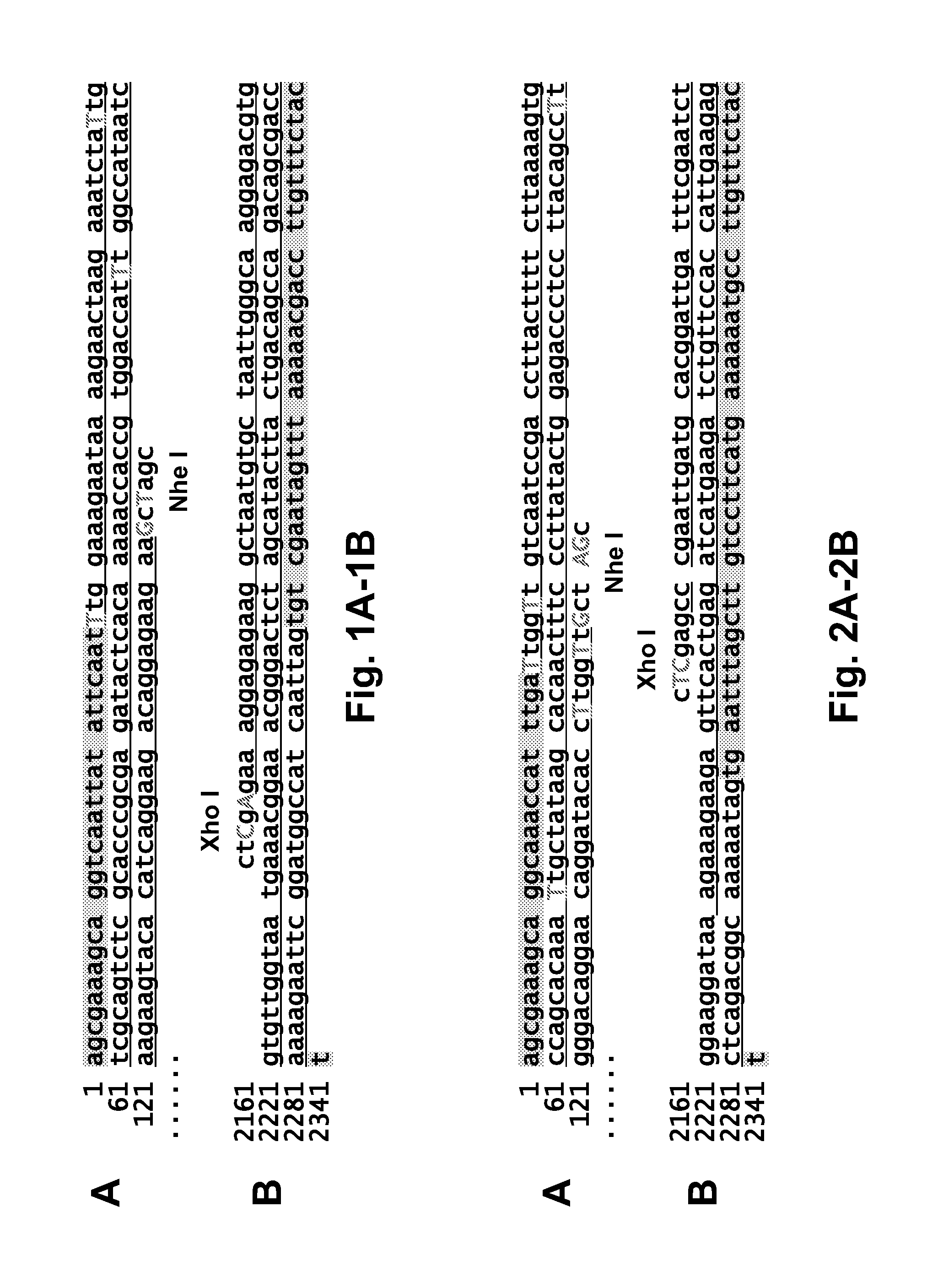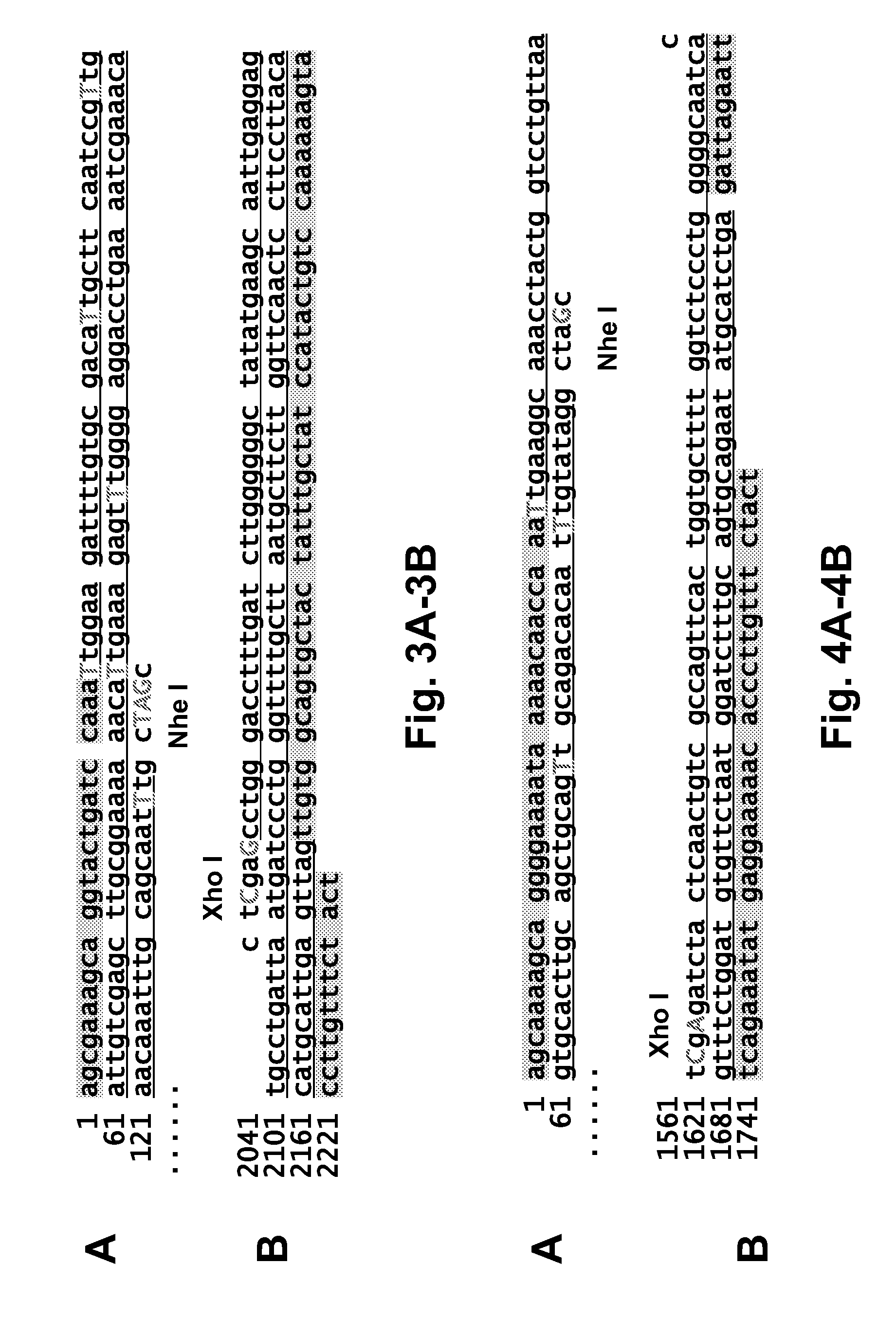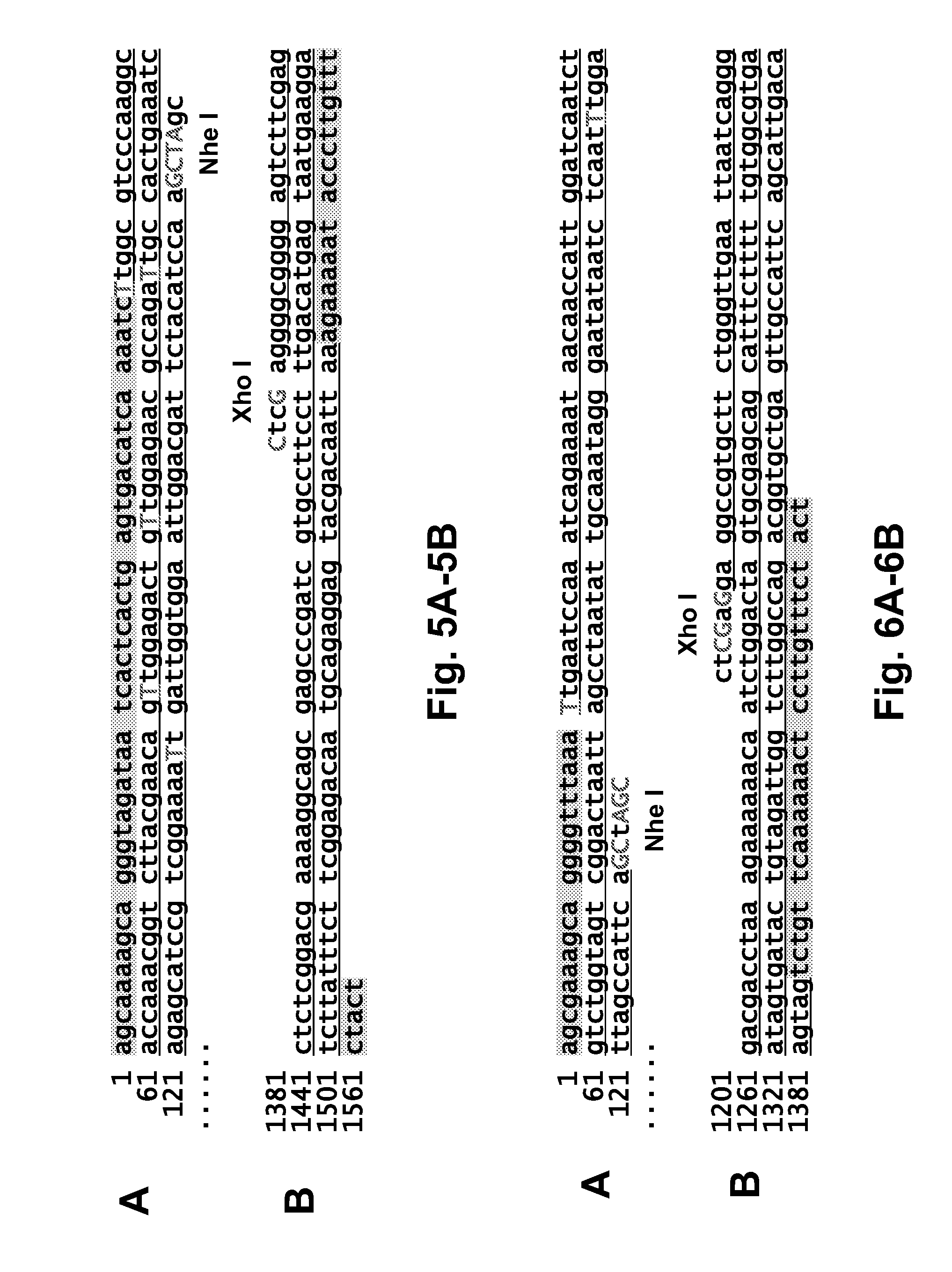Influenza viruses and uses thereof
- Summary
- Abstract
- Description
- Claims
- Application Information
AI Technical Summary
Benefits of technology
Problems solved by technology
Method used
Image
Examples
example 1
6. Example 1
[0472]This example describes the production of chimeric influenza virus gene segments and the use of those gene segments to produce an influenza virus that is not able to reassort with other influenza viruses to produce replicating reassortant virus.
[0473]6.1 Materials & Methods
[0474]Cells and viruses. 293T cells were maintained in Dulbecco's modified Eagle's medium with 10% fetal calf serum. MDCK cells were grown in Eagle's minimal essential medium with 10% fetal calf serum. Viruses were grown in 10-day-old specific-pathogen-free chicken embryos (Charles River Laboratories, SPAFAS, Preston, Conn.).
[0475]Plasmid construction. (i) Generation of NS-HAwt-NS construct (FIG. 25A). The 1.2 kb Kpn I fragment from the previously constructed pDZ-NS plasmid (Quinlivan M, et al. (2005) Attenuation of equine influenza viruses through truncations of the NS1 protein. J Virol 79:8431-8439) was transferred to the Kpn I site of pUC18 vector and subjected to site-directed mutagenesis to m...
example 2
7. Example 2
[0495]This example describes the production of recombinant influenza viruses using reverse genetics.
[0496]Three recombinant A / PR / 8 / 34 viruses with 6 or 7 rewired RNA segments were successfully generated (FIGS. 34-36). Each of the chimeric segments that carried packaging signals from a different segment either lost or significantly decreased its ability to form reassortant virus with wild type RNAs.
[0497]To generate the chimeric constructs used to rescue the recombinant viruses shown in FIGS. 34-36, two sets of plasmids were used: one set of 8 plasmids carried the segment-specific packaging sequences derived from the 8 RNA segments of the influenza A / PR / 8 / 34 virus (see FIGS. 1-8) Importantly, the ATGs located on each 3′ end-proximal ORF region packaging signal and the 5′ splice site on the M and NS segment-derived packaging sequences were all mutated to allow for correct initiation of downstream ORFs (see FIGS. 1-8); the second set of 8 plasmids carried all 8 ORFs of the ...
example 3
8. Example 3
[0499]This example describes the production of nine-segmented influenza viruses based on the manipulation of the segment-specific packaging signals.
[0500]8.1 Materials & Methods
[0501]Cells and viruses. 293T cells were maintained in Dulbecco's modified Eagle's medium with 10% fetal calf serum (FCS). MDCK cells were grown in Eagle's minimal essential medium with 10% FCS. Viruses were grown in 10-day-old specific-pathogen-free chicken embryos at 37° C. (Charles River Laboratories, SPAFAS).
[0502]Plasmid construction. (i) Generation of NA-PB1mut-NA, NA-PB2mut-NA, and NA-PAmut-NA constructs (FIG. 29A left). To introduce silent mutations at the two ends of each ORF, the ORFs of the PB1, PB2, and PA genes were amplified by PCR from previously constructed pDZ-PB1, PB2, and PA constructs (Quinlivan et al., 2005, J Virol 79:8431-9) and cloned into a pGEM-T vector (Promega). Primers (forward: 5′-ca gctagc atg gaC gtT aaC ccA acT CtG TtA ttT CtG aaG gtA ccG gcG caG aaC gcC atC agT ac...
PUM
| Property | Measurement | Unit |
|---|---|---|
| Volume | aaaaa | aaaaa |
| Volume | aaaaa | aaaaa |
| Volume | aaaaa | aaaaa |
Abstract
Description
Claims
Application Information
 Login to View More
Login to View More - R&D
- Intellectual Property
- Life Sciences
- Materials
- Tech Scout
- Unparalleled Data Quality
- Higher Quality Content
- 60% Fewer Hallucinations
Browse by: Latest US Patents, China's latest patents, Technical Efficacy Thesaurus, Application Domain, Technology Topic, Popular Technical Reports.
© 2025 PatSnap. All rights reserved.Legal|Privacy policy|Modern Slavery Act Transparency Statement|Sitemap|About US| Contact US: help@patsnap.com



